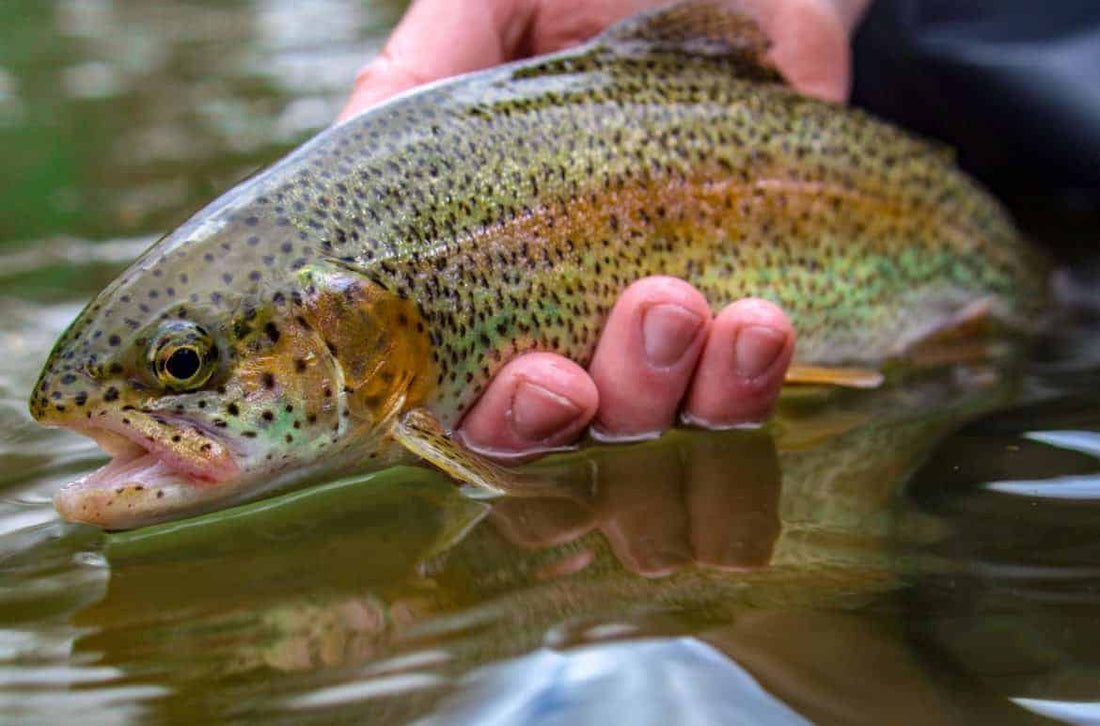The buzz of a million hoppers coming from the roadside meadow overtakes the truck’s powering down engine.
A warm breeze wipes away the single bead of sweat rolling down the angler’s face as 4X leaders are topped off with 5X tippet. Waders have been stowed away for a month as the less cumbersome wet wading shoes take center stage. One fly box is all that is needed today. As rows of ants, beetles, and inchworms lie ready and waiting, the angler reaches for the granddaddy of them all: the fabled grasshopper pattern.
Go into any fly shop during mid-late summer and the talk will undoubtedly revolve around these beloved terrestrials. Our desire to catch trout on huge dry flies haunts our dreams during winter months and drives us to fish constantly during the warmth of summer. Fishing one of these bugs effectively requires a few specific tactics, though.
One of the most important factors to consider is exactly where we are fishing our hoppers. Anglers are creatures of habit, and April-June can yield some of the most electric dry fly fishing of the year, but most of it revolves around caddis, mayfly, and stonefly hatches. Typically these patterns will be fished in the middle of runs or in the creases of riffles dumping into larger holes.
With hoppers, our fly location needs to change entirely.
Think of where a grasshopper would naturally exist, and more specifically where it might fall into the stream, and the trout waiting patiently for a protein-packed dinner. Tight to the bank is often the name of the game. It’s more than just right on the bank; fishers also have to consider what a hopper would do if it haphazardly fell into the water.
- Fish the banks!
- Strip hoppers back towards the shore, perfectly imitating what this insect would do.
- Focus efforts on stream sections with vegetation that runs right up to the water.
- Add as much movement as possible to flies skittering on the water.
Imagine a favorite stretch of water, and how we typically fish it. What are the odds it’s fished going upstream with casts venturing into the middle or opposite half of the stream? Since the odds are good, that related to hopper fishing by being somewhat incorrect. A hopper that falls into the water will be frantically trying to make its way back to shore, by the quickest route possible.
To imitate this, sneak up to a nice undercut bank or deeper pool on your hands and knees. From a kneeling or crouching position cast a hopper about ten feet from shore and strip it back towards you in two or three-inch bursts. This can mimic almost exactly what a live bug would do in this scenario.
Fishing our flies in this manner will result in more fish and bigger fish. Many a large brown trout lies in wait under the overhang of vegetation just waiting for supper to fall from the sky in a fish’s version of Cloudy With a Chance of Meatballs.
That thought brings us to another hopper tactic, which is focusing our efforts on stream areas that feature higher densities of stream-side brush. By focusing on spots that harbor more hoppers, we are more inclined to encounter fish accustomed to feeding on them, thus resulting in more fish caught.
As the weather warms and our heavy nymphs are packed away in favor of more appealing terrestrials, remember to fish them in a way that mirrors the natural bugs. Find those stream sections featuring plenty of bushes, and after creeping towards the water make casts that get our hoppers into the correct zone. If that is all accomplished, get ready for some of the most exciting and anticipated action of the season!



